Abstract
Behavioral fluency is that combination of accuracy plus speed of responding that enables competent individuals to function efficiently and effectively in their natural environments. Evolving from the methodology of free-operant conditioning, the practice of precision teaching set the stage for discoveries about relations between behavior frequency and specific outcomes, notably retention and maintenance of performance, endurance or resistance to distraction, and application or transfer of training. The use of frequency aims in instructional programming by Haughton and his associates led to formulation of empirically determined performance frequency ranges that define fluency. Use of fluency-based instructional methods has led to unprecedented gains in educational cost effectiveness, and has the potential for significantly improving education and training in general. This article traces the development of concepts, procedures, and findings associated with fluency and discusses their implications for instructional design and practice. It invites further controlled research and experimental analyses of phenomena that may be significant in the future evolution of educational technology and in the analysis of complex behavior.
Keywords: fluency, behavior frequency, precision teaching, automaticity, instructional design, free operant
Full text
PDF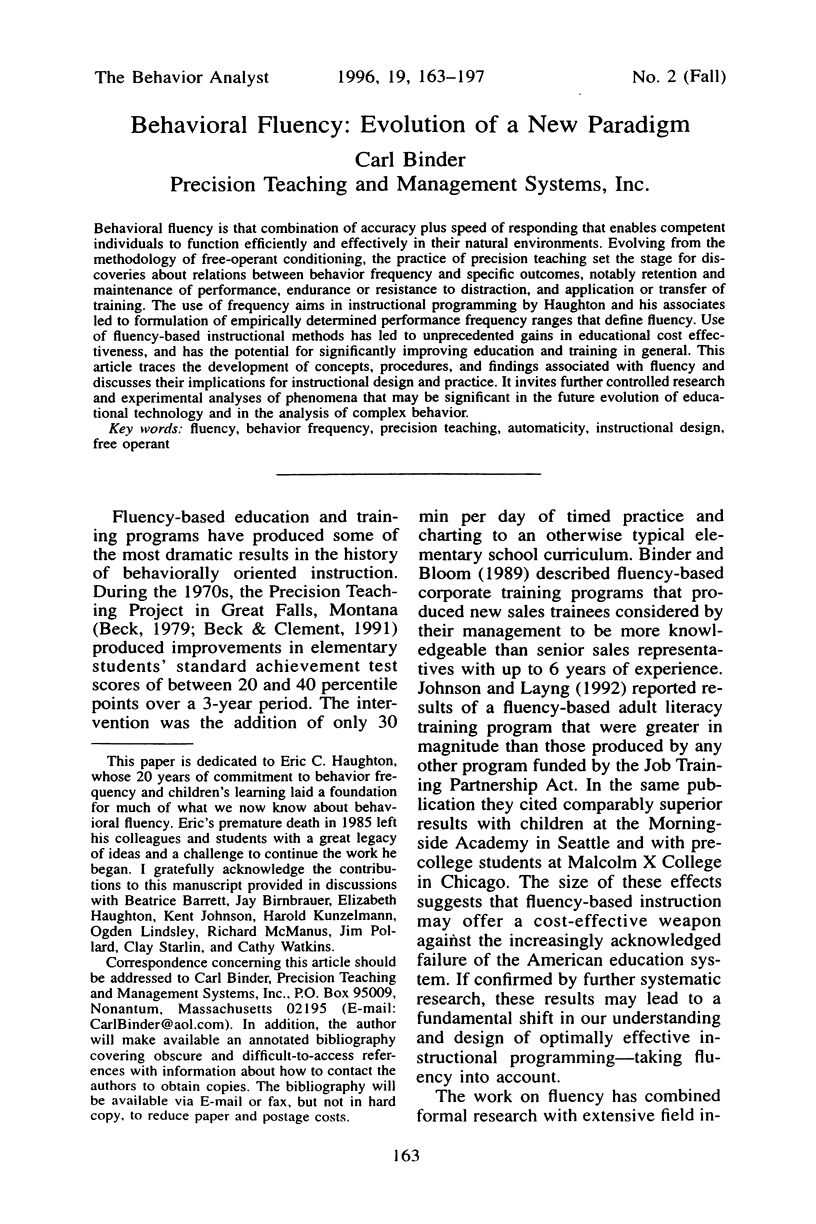
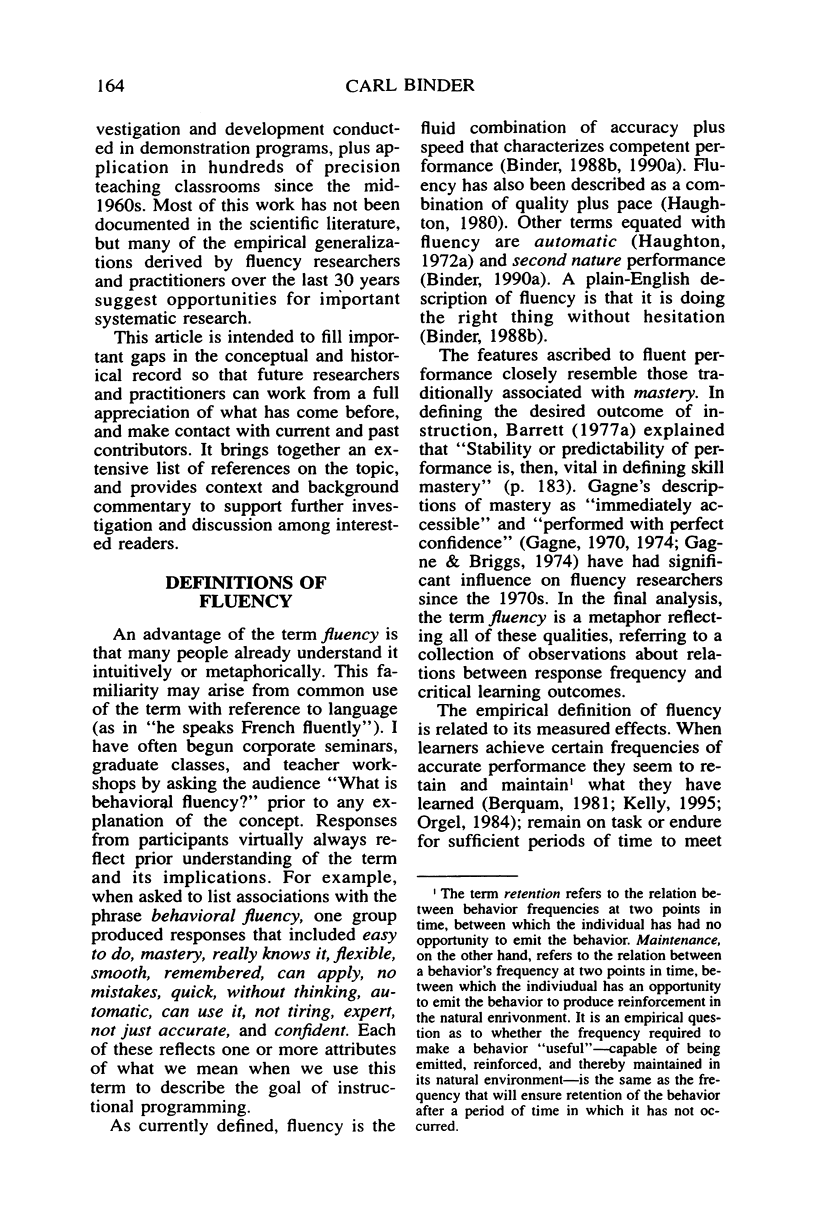
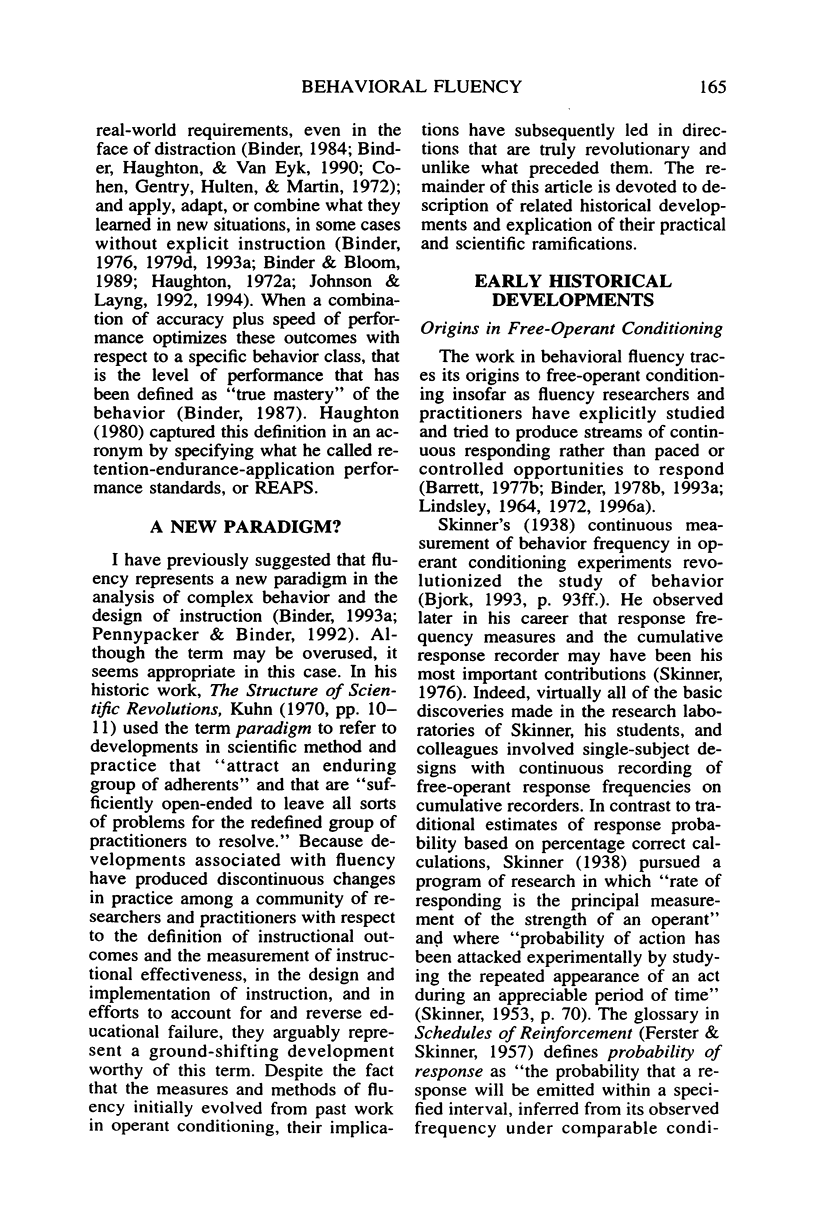
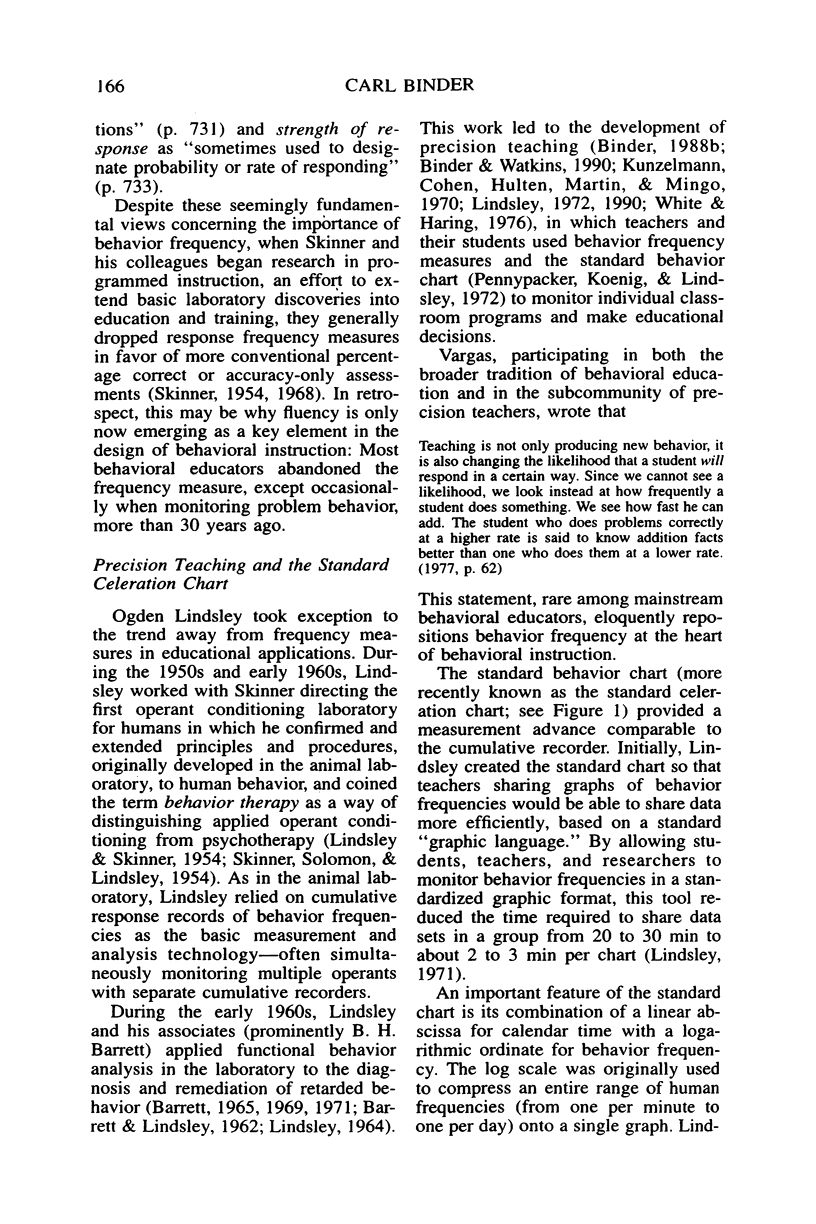
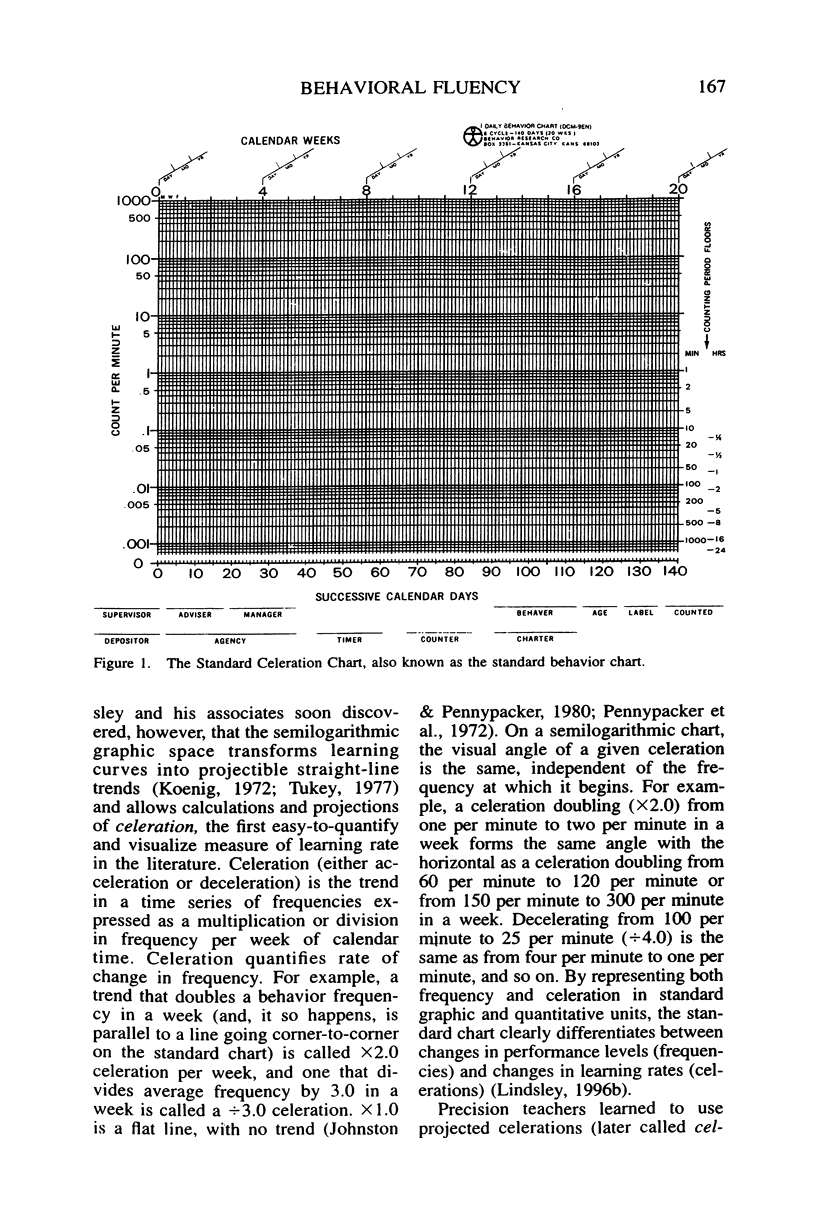
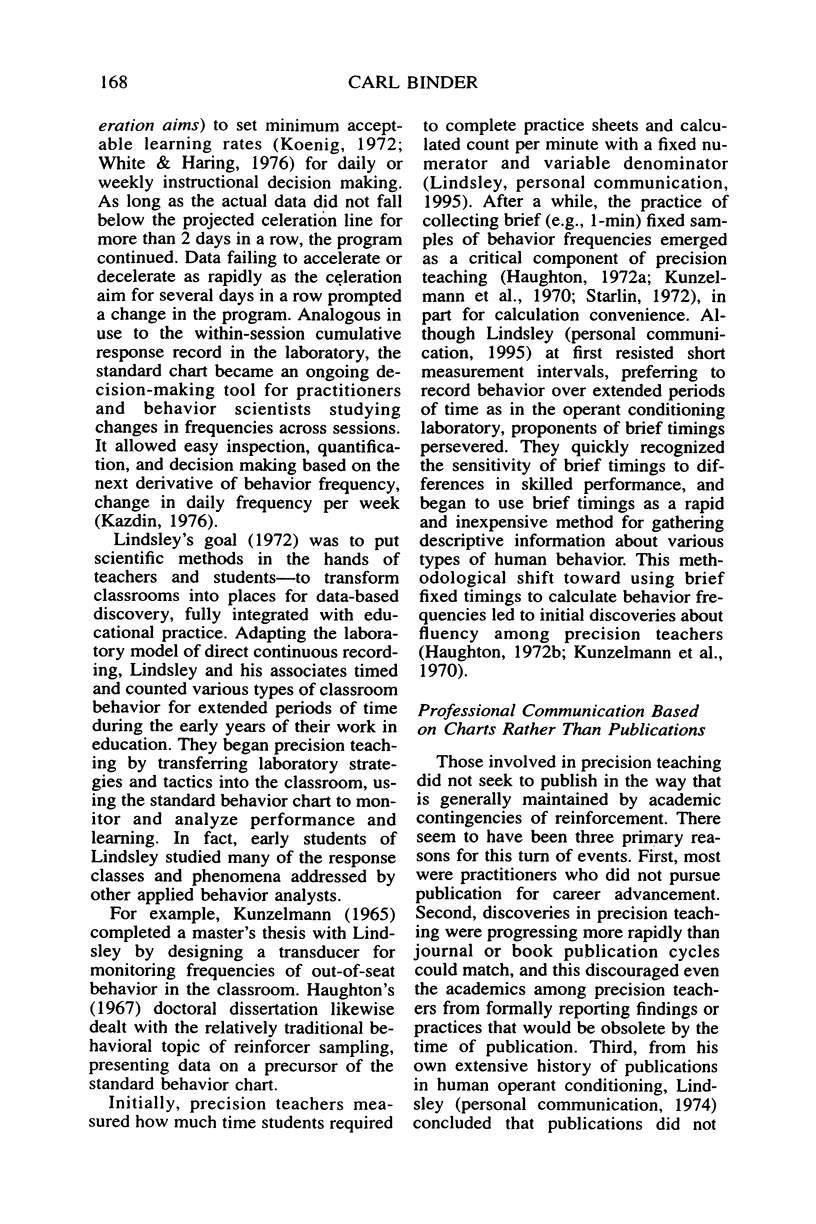
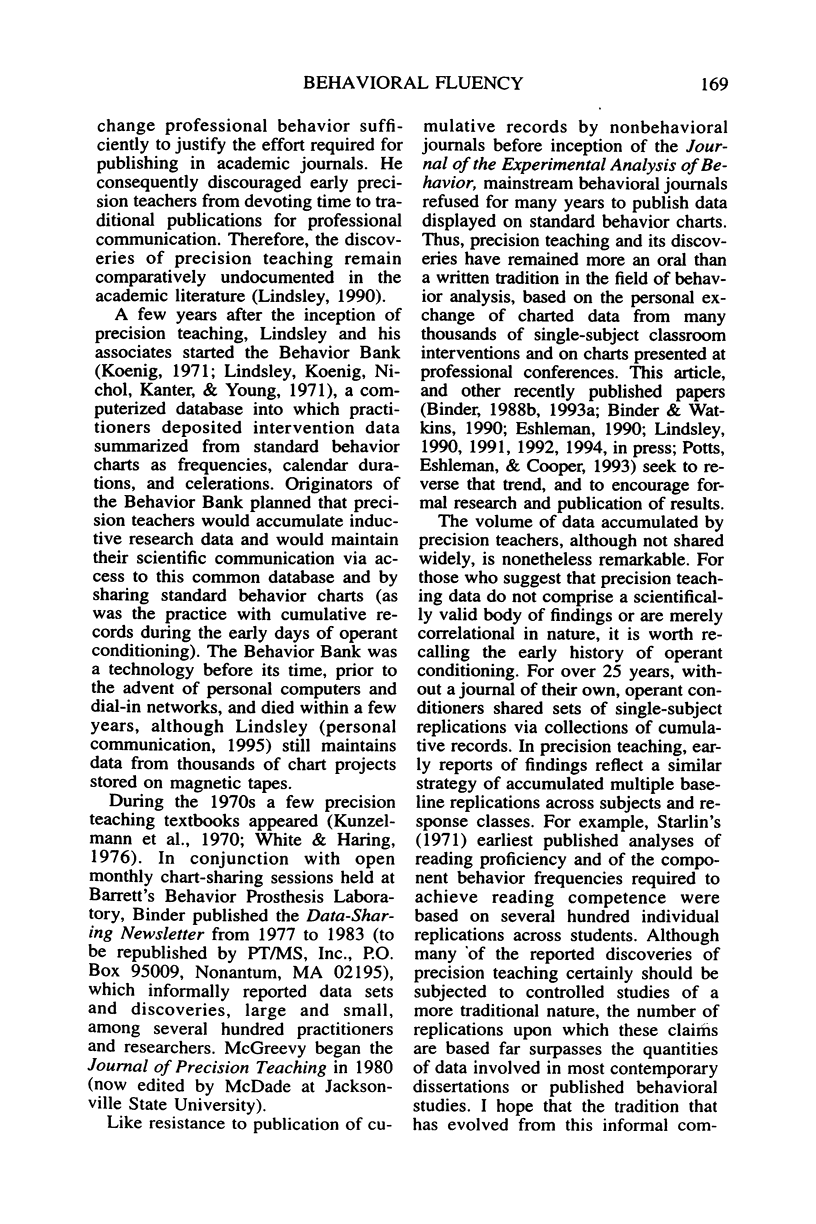

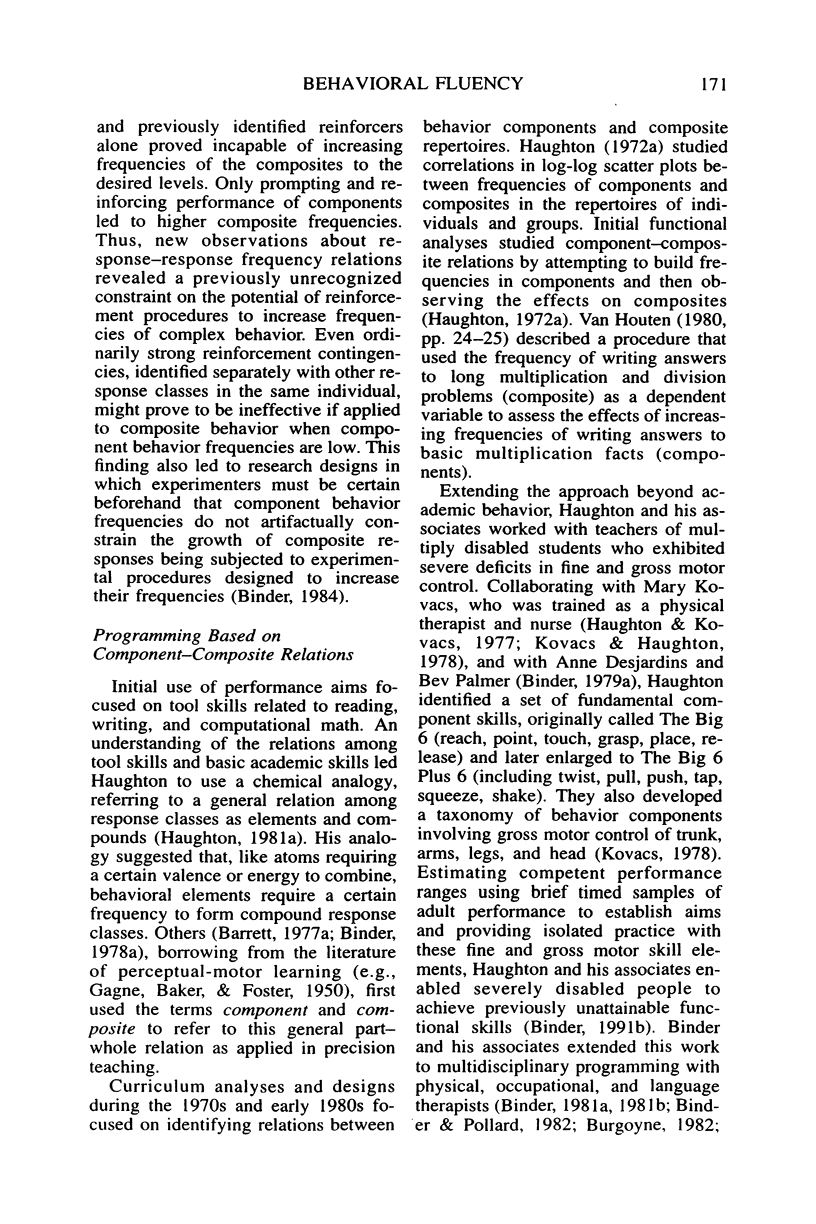
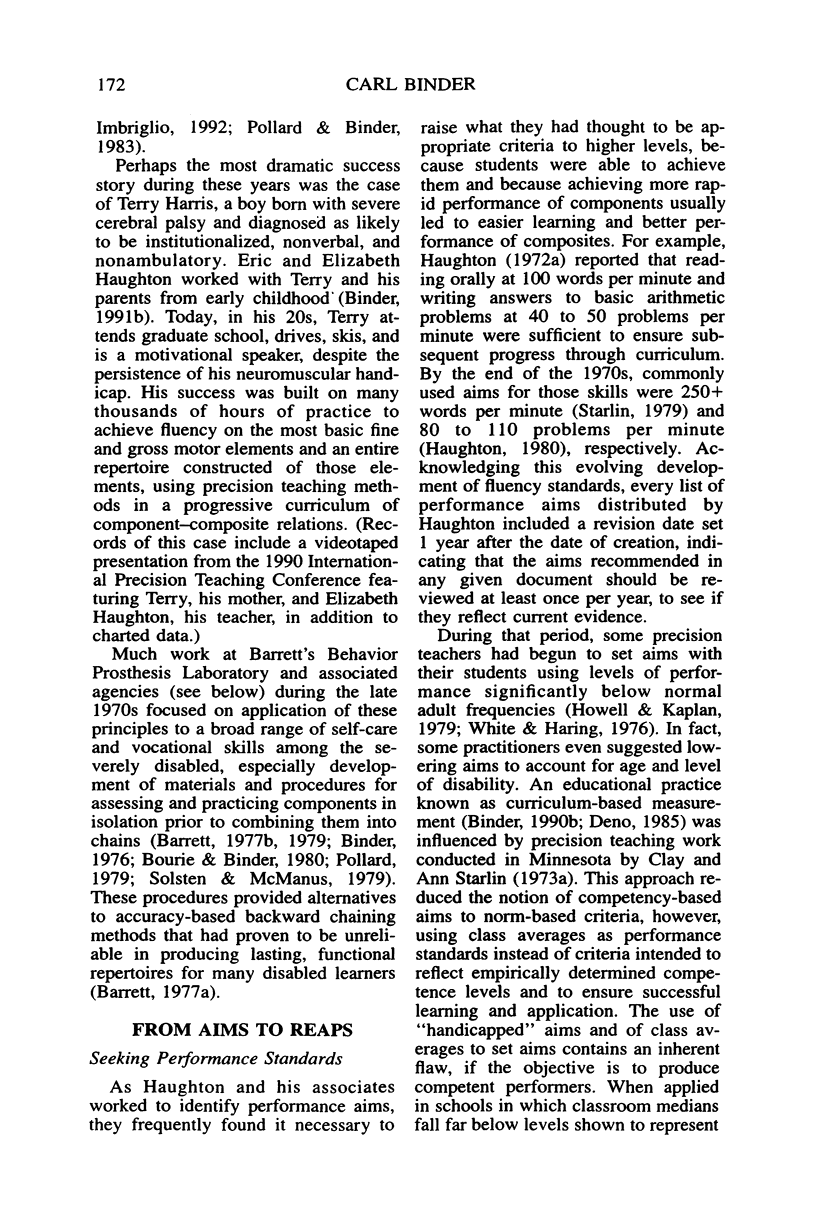
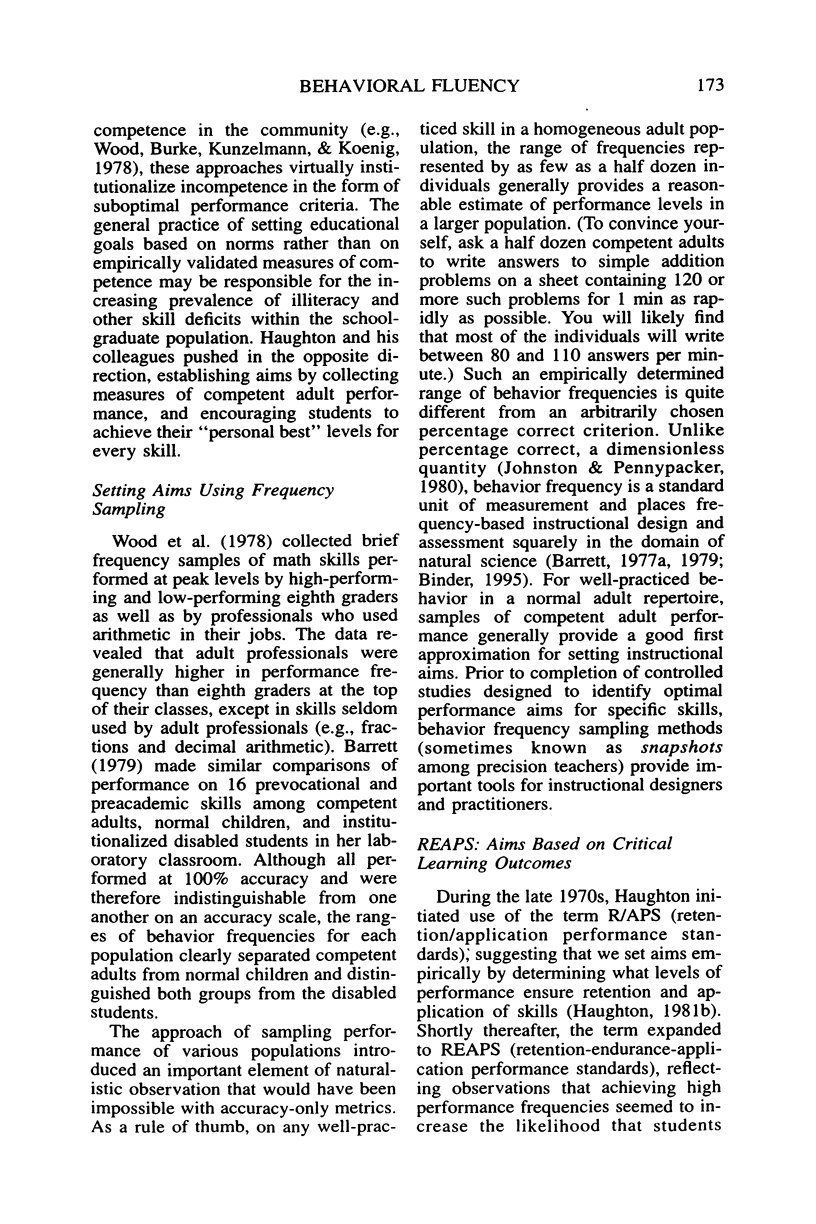
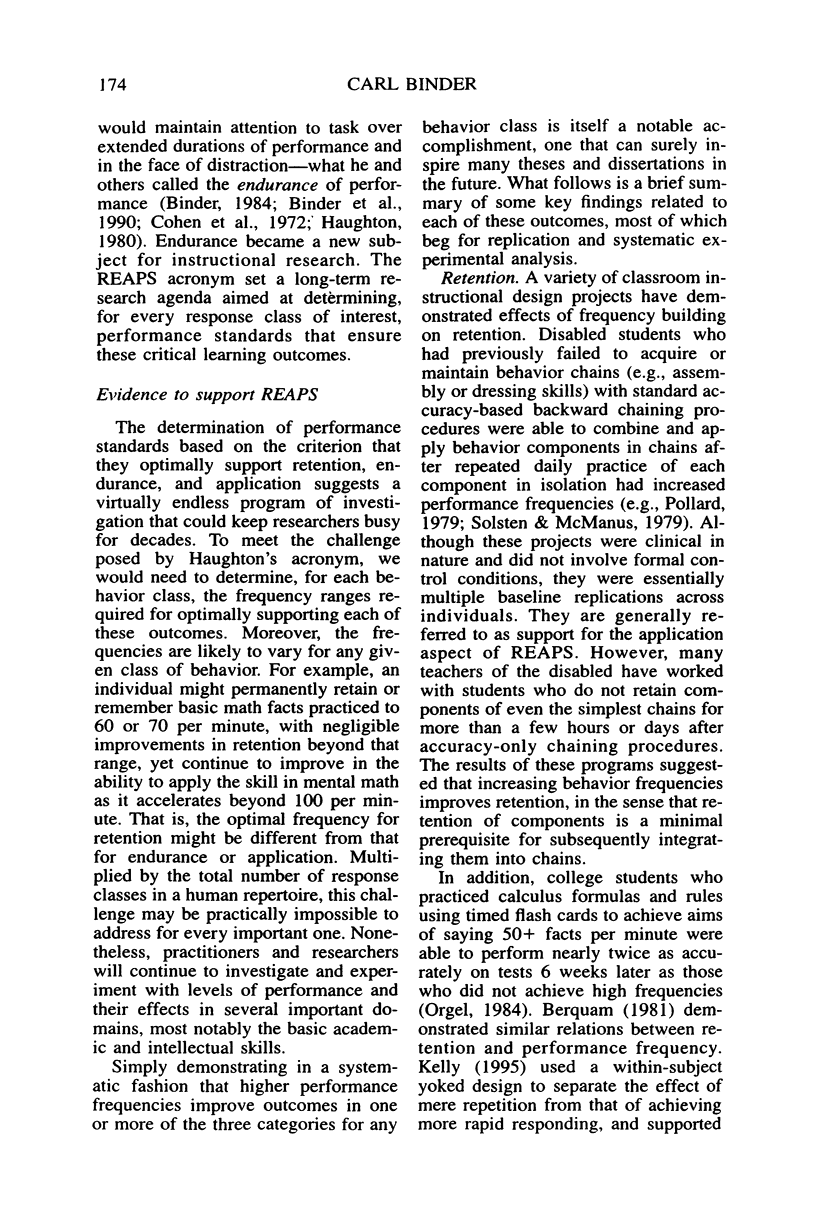

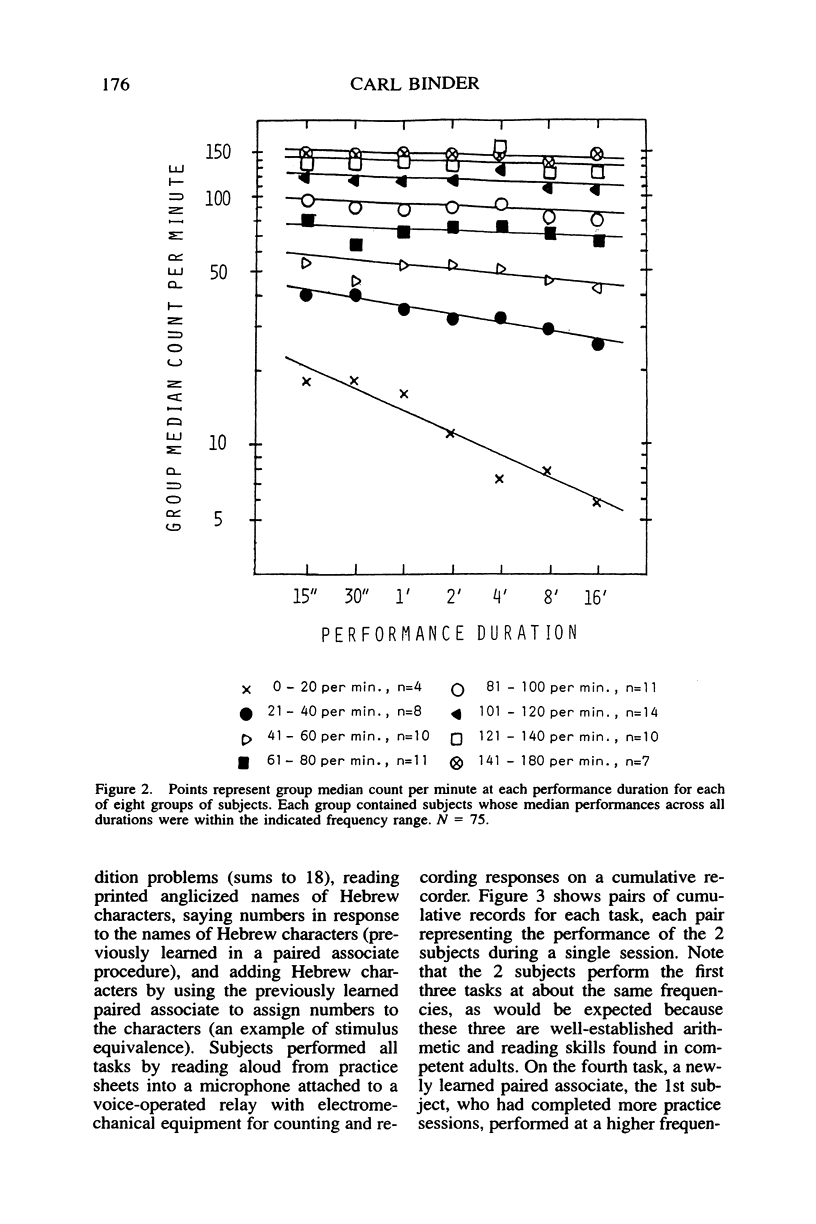
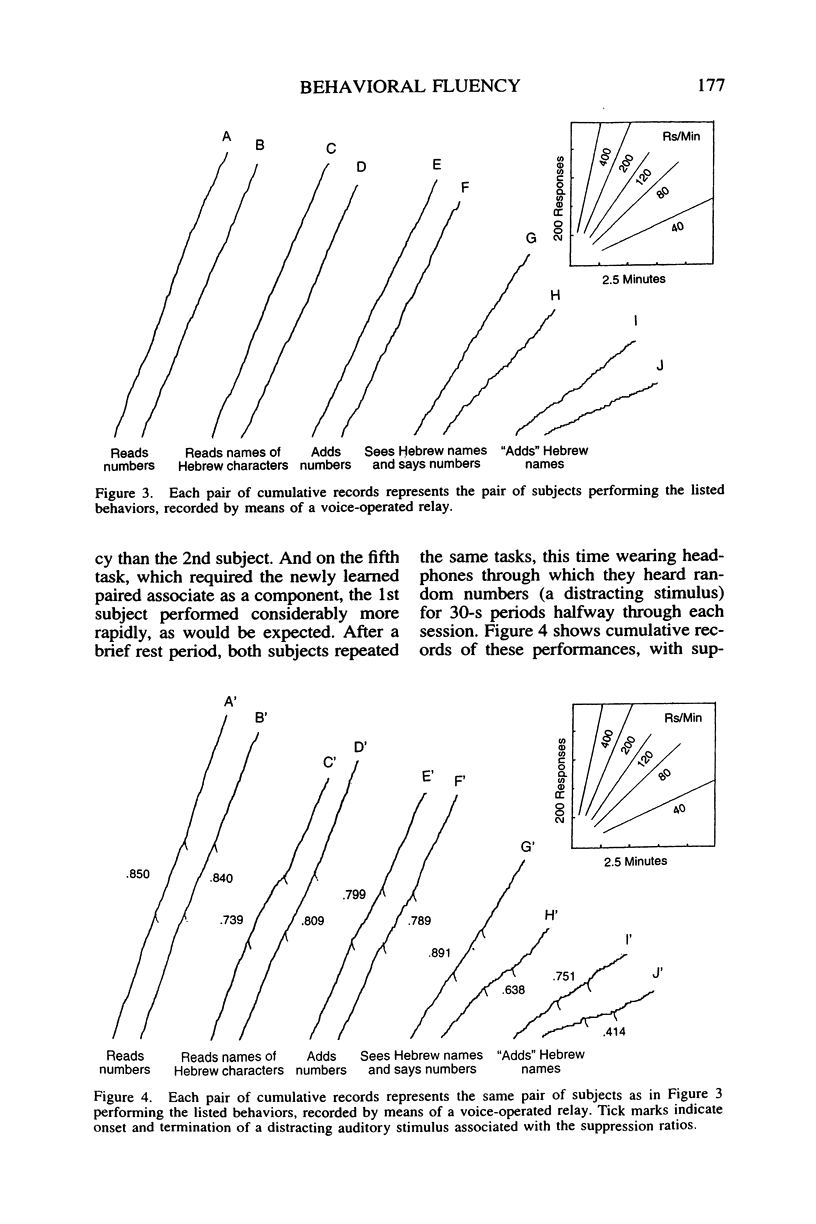

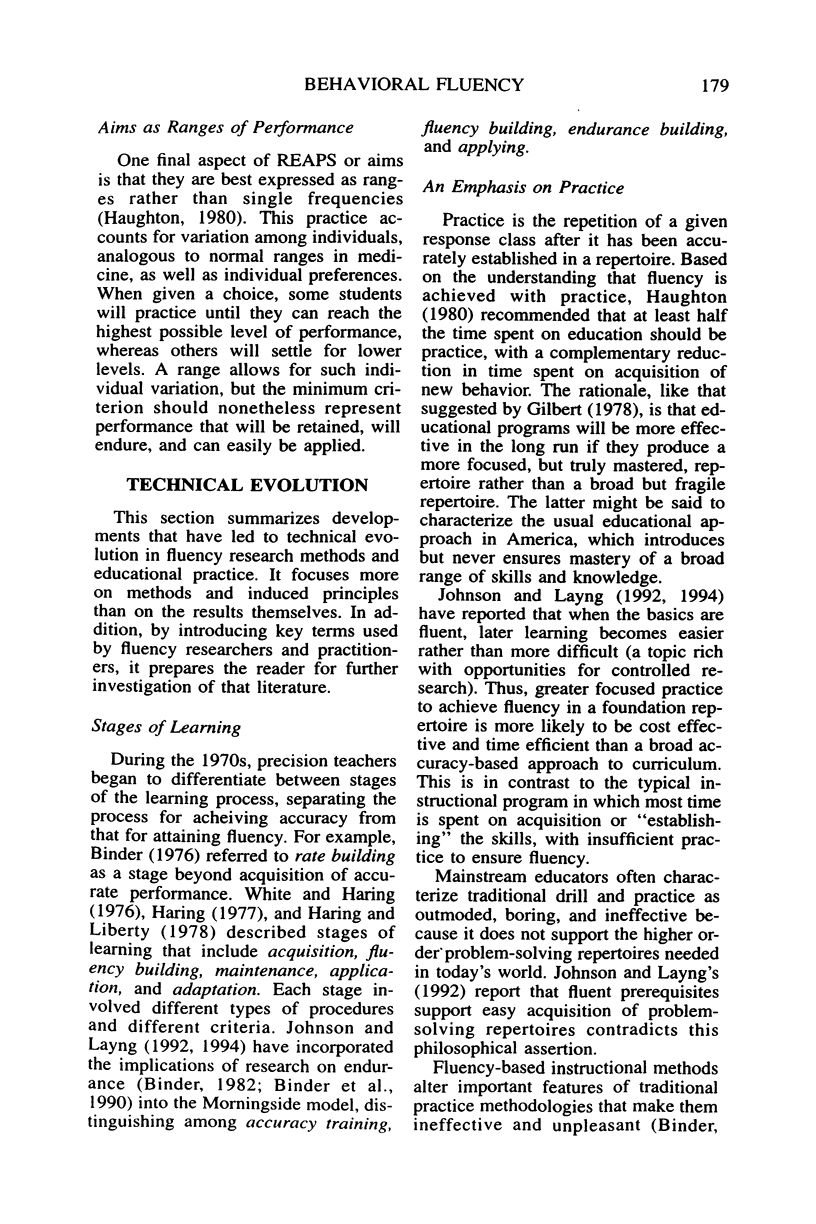
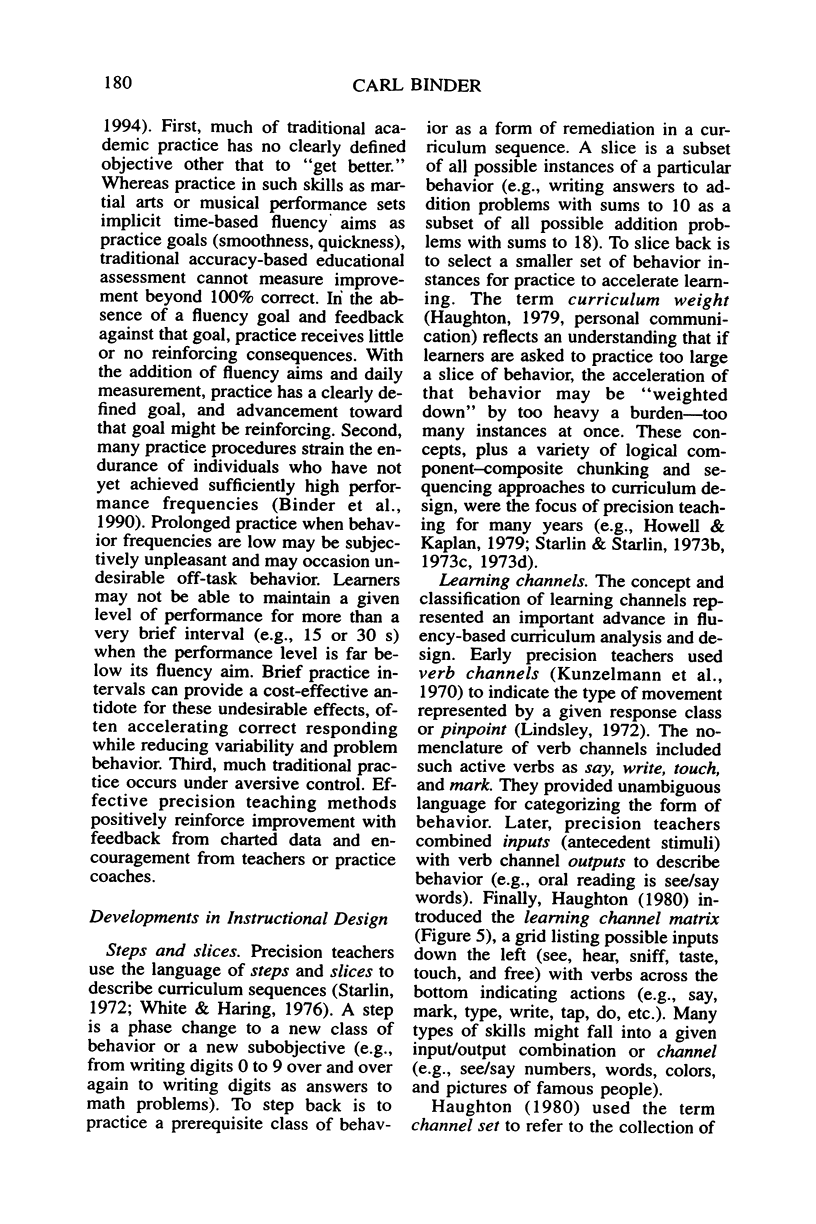
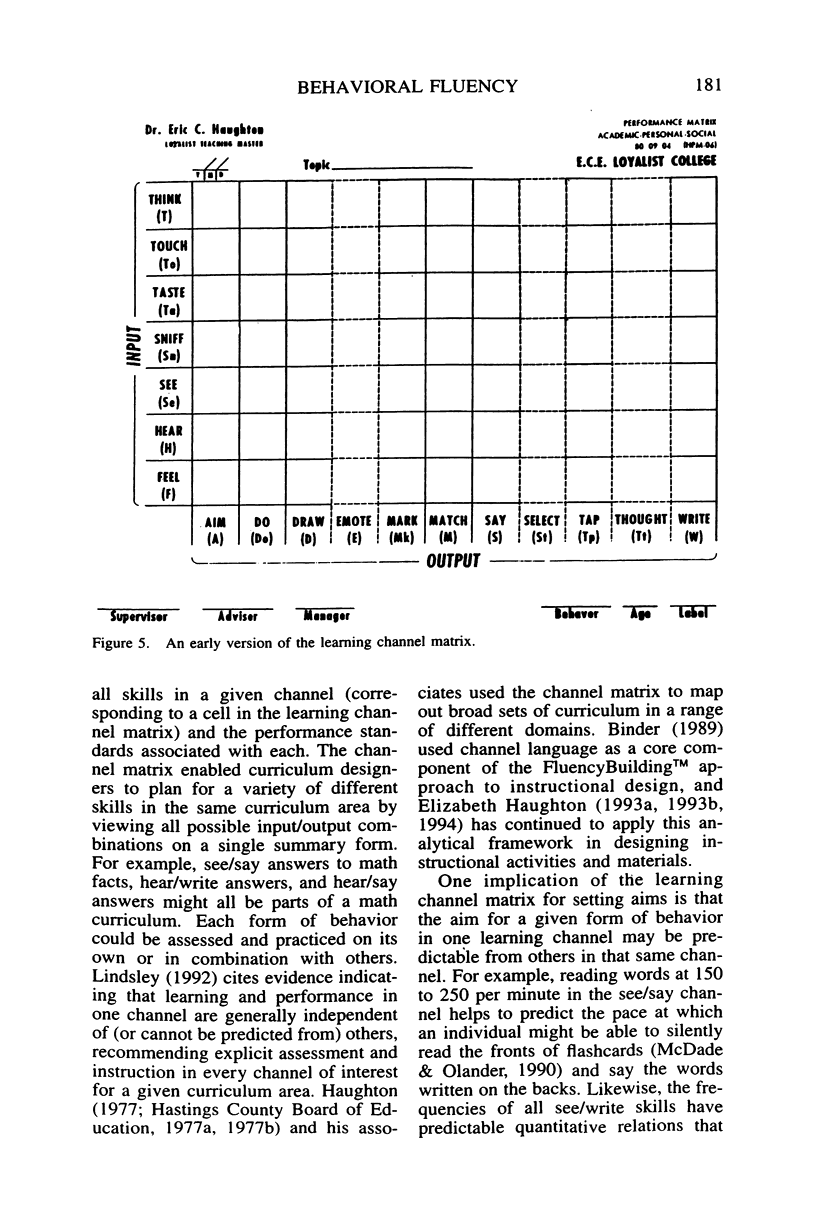
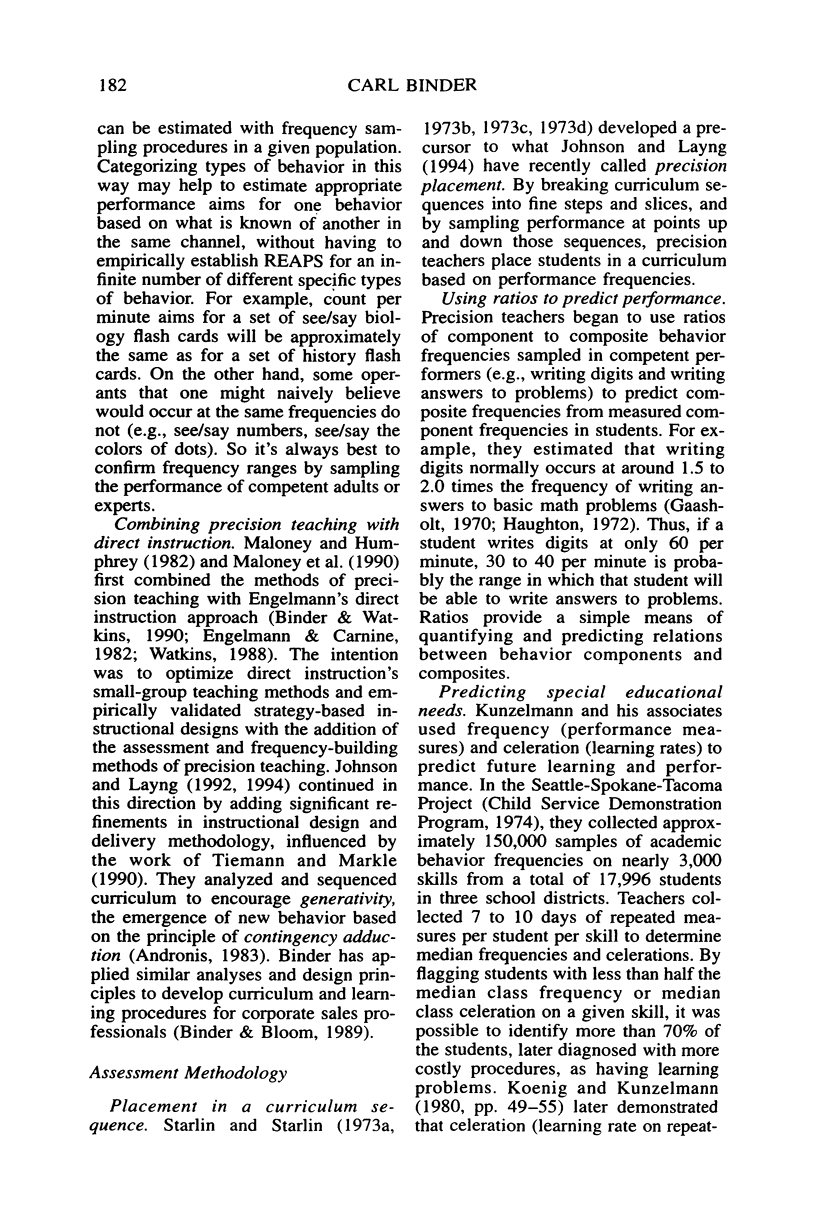

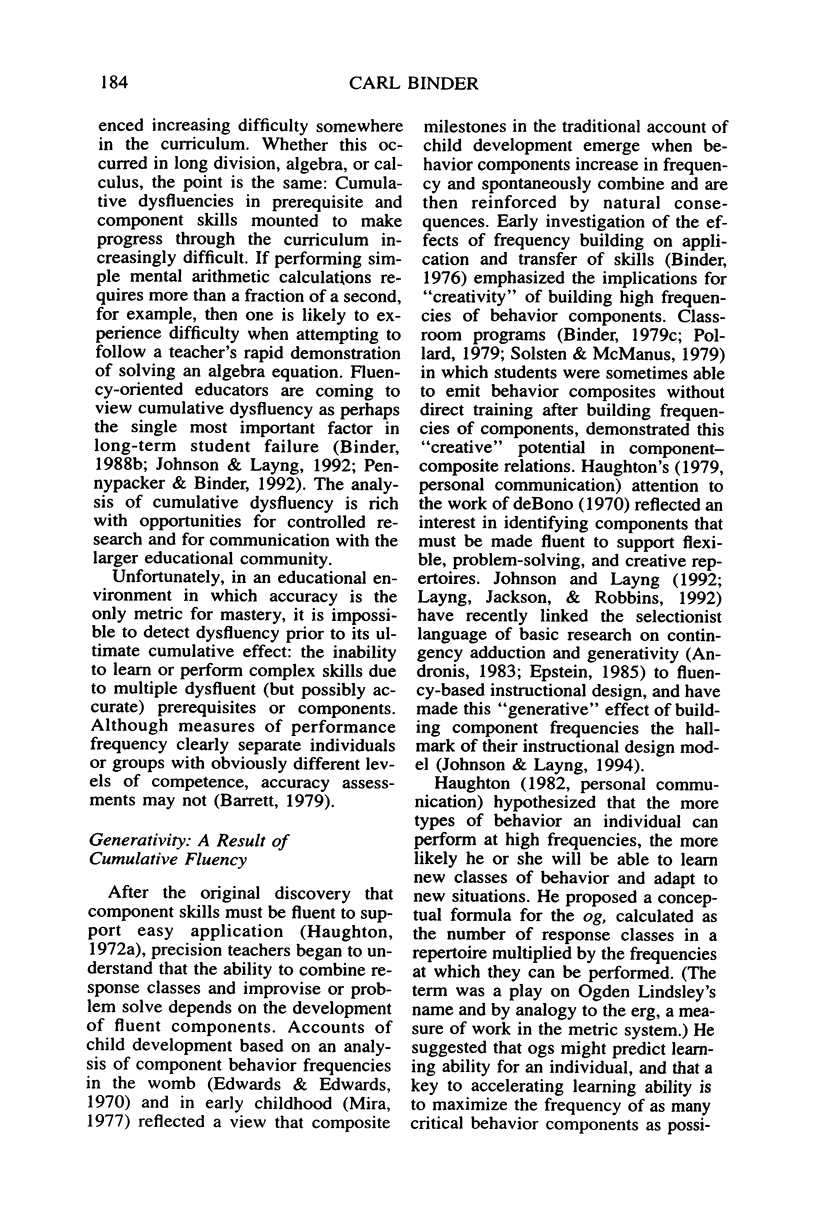
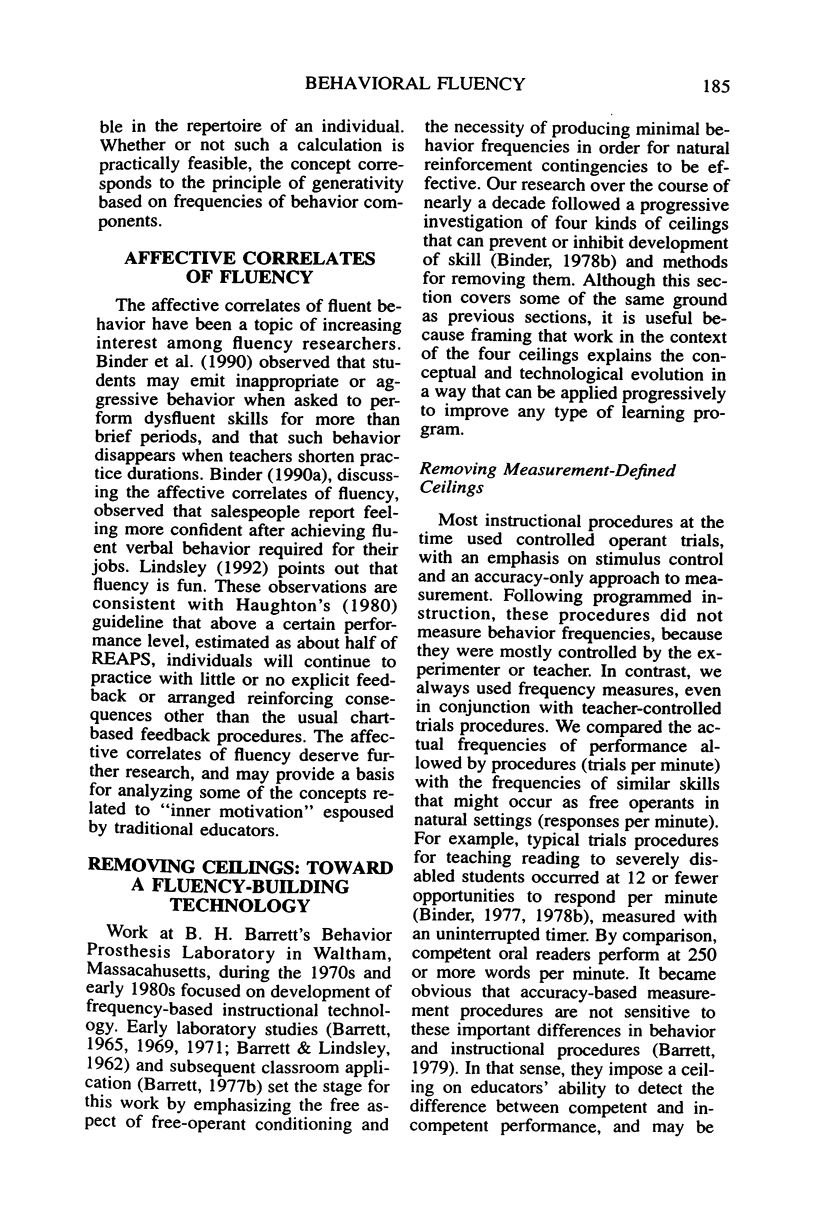
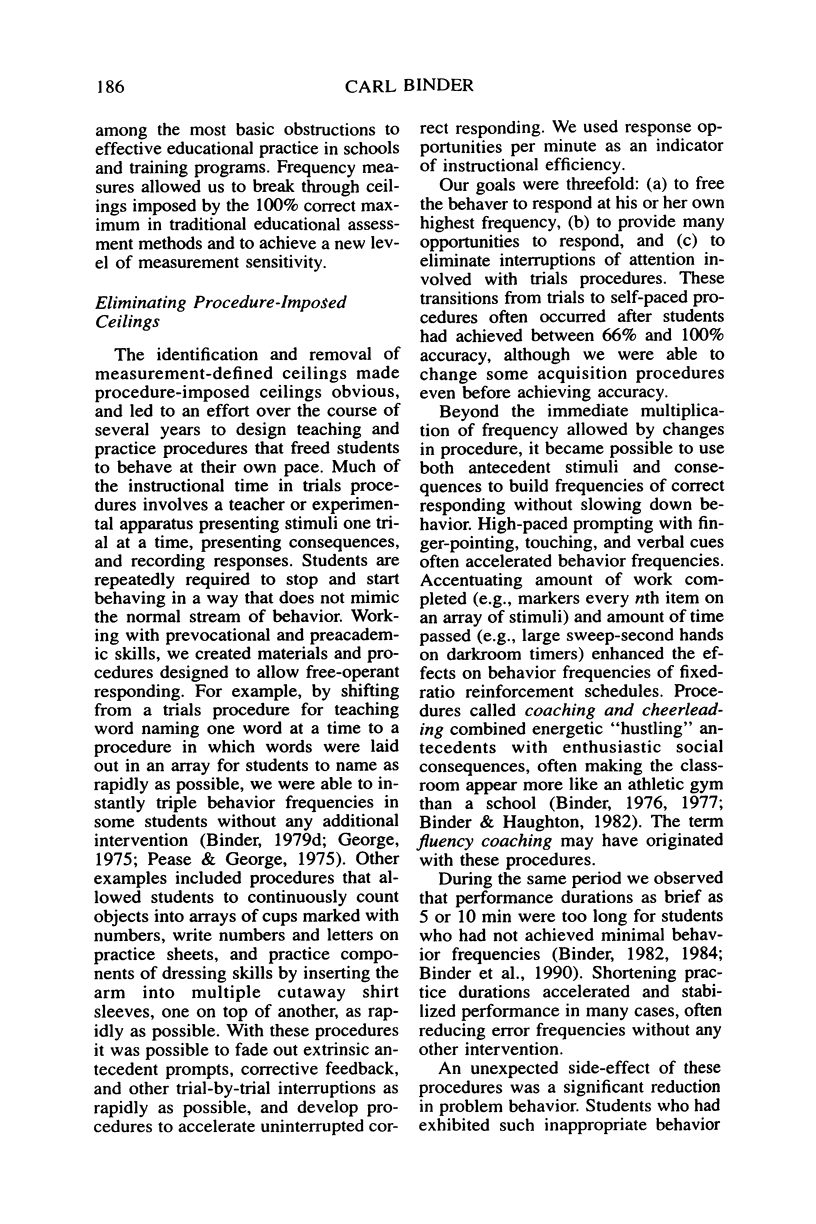
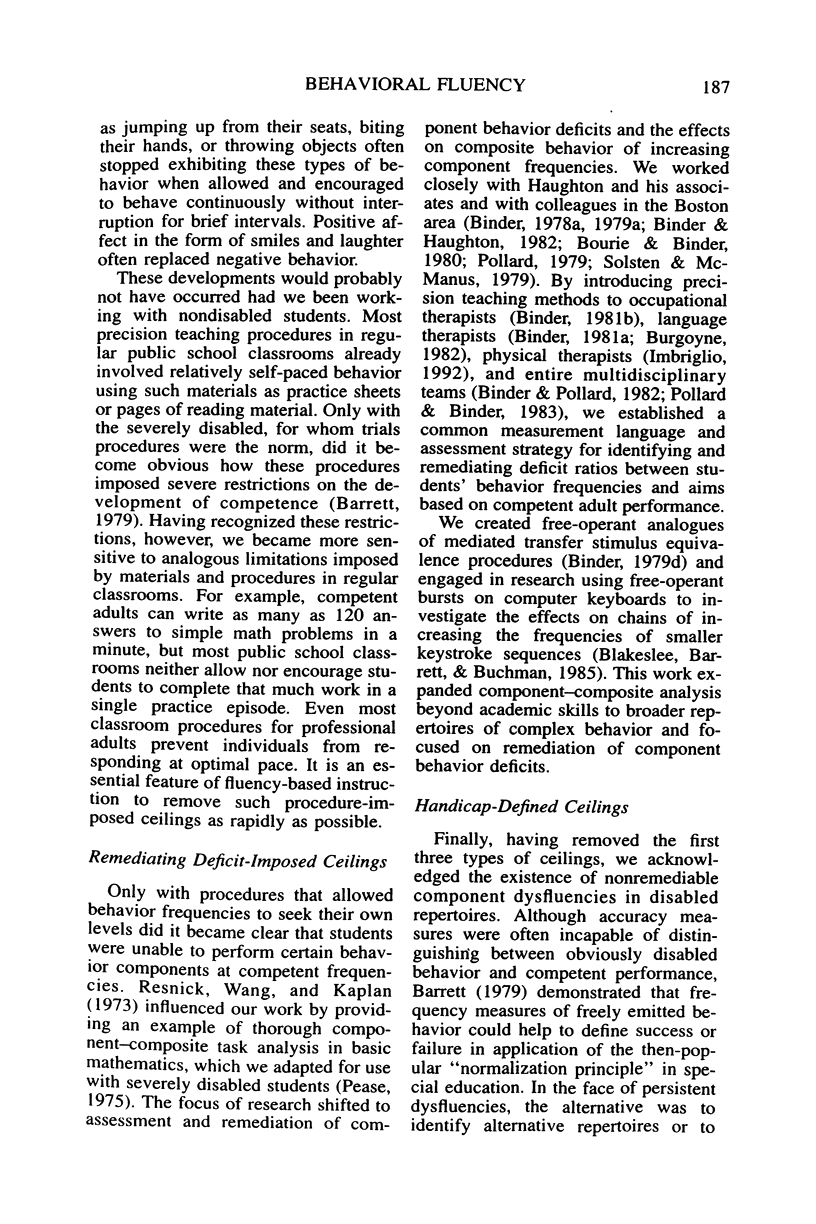
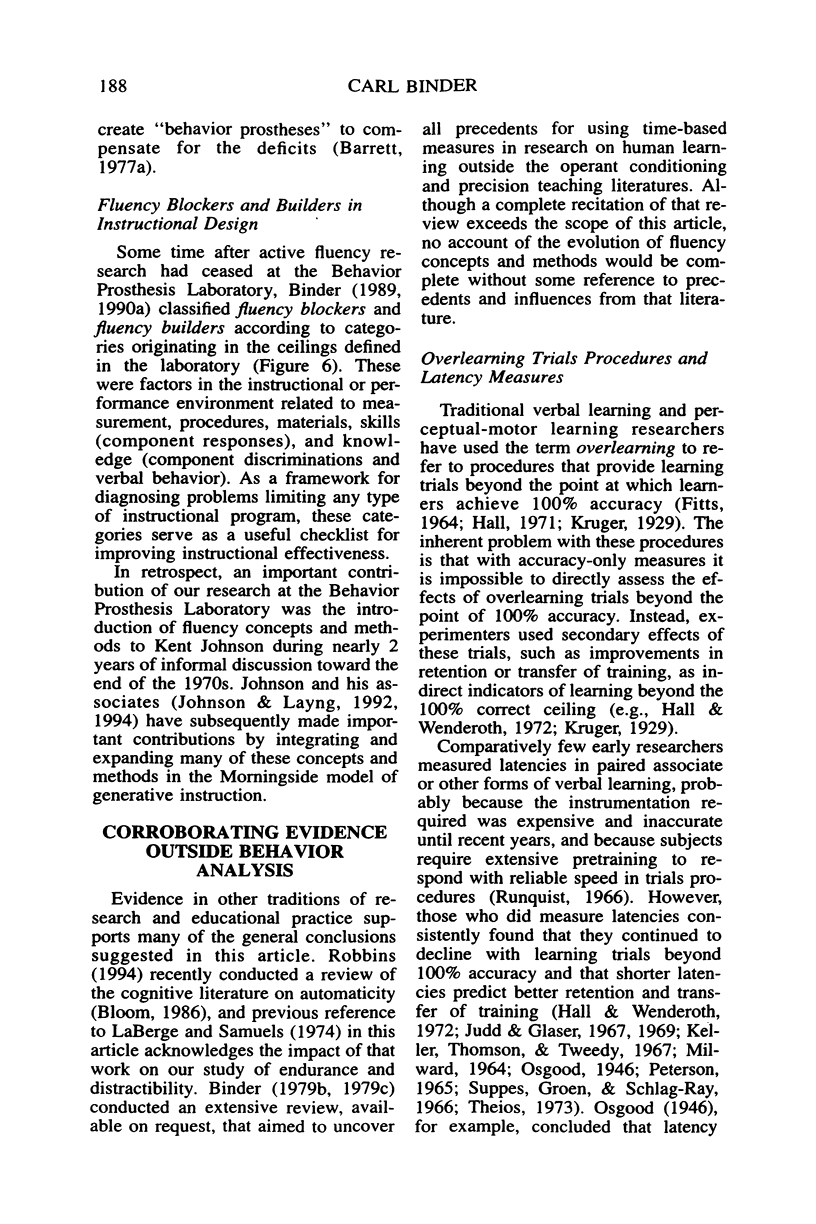
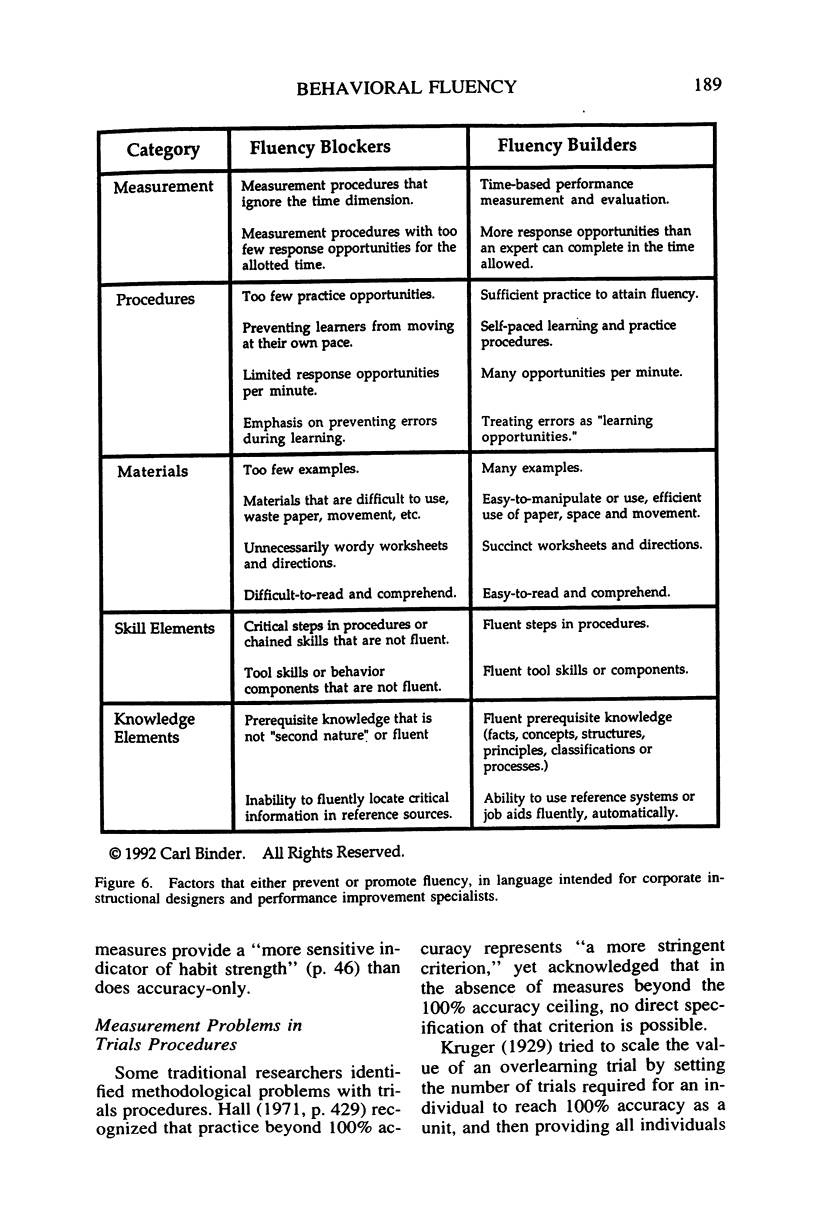
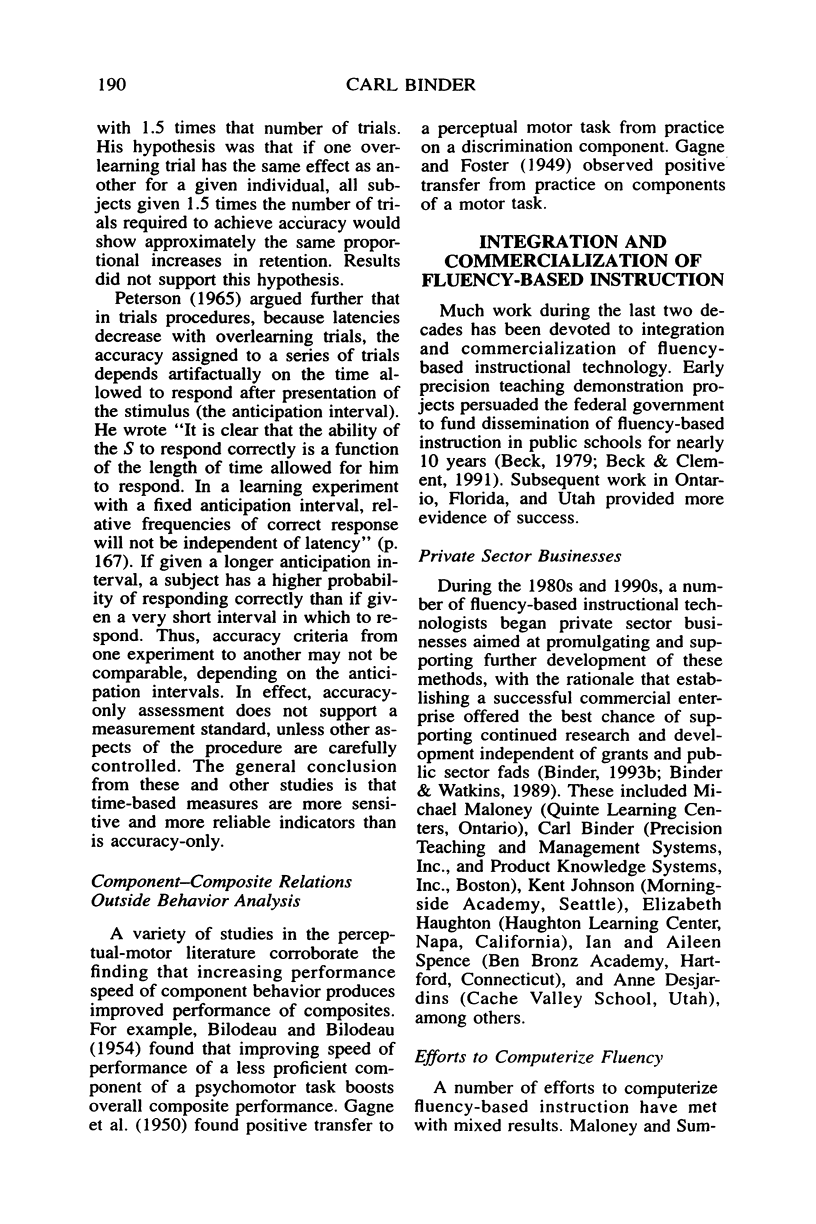
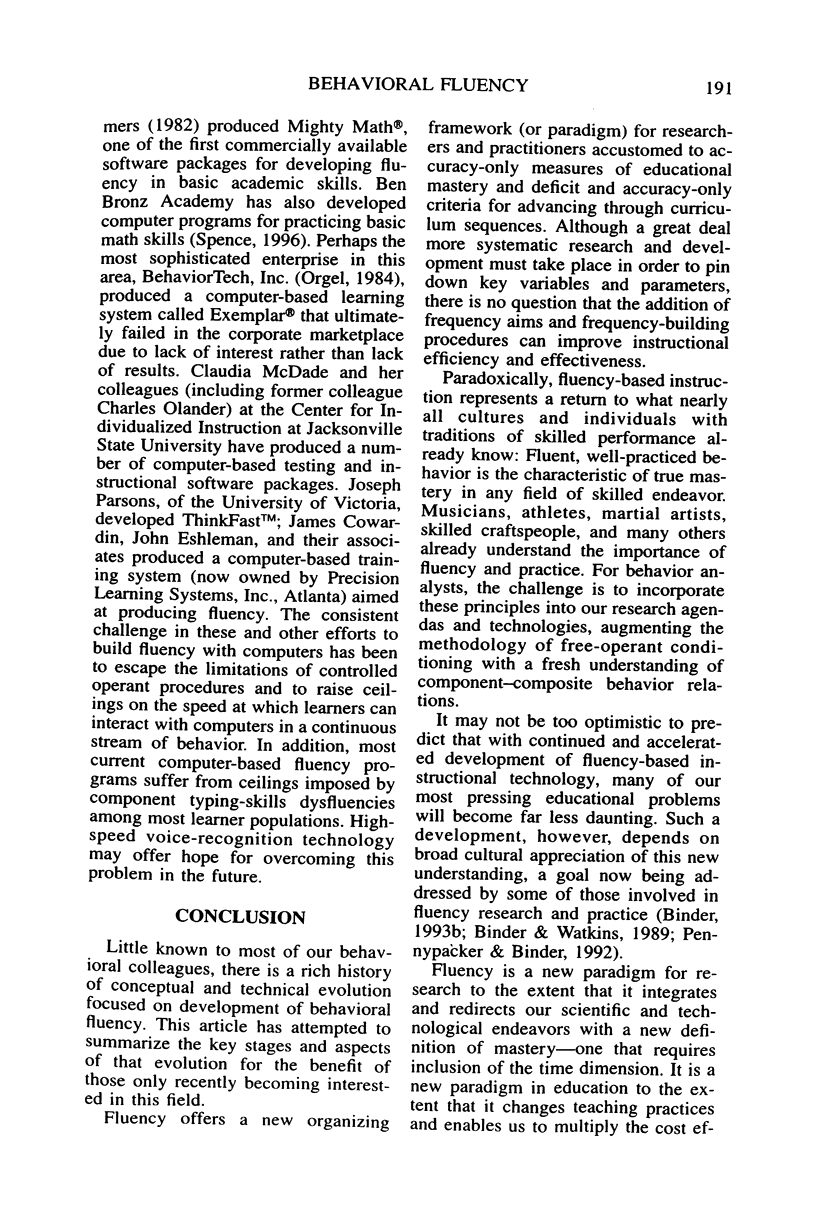
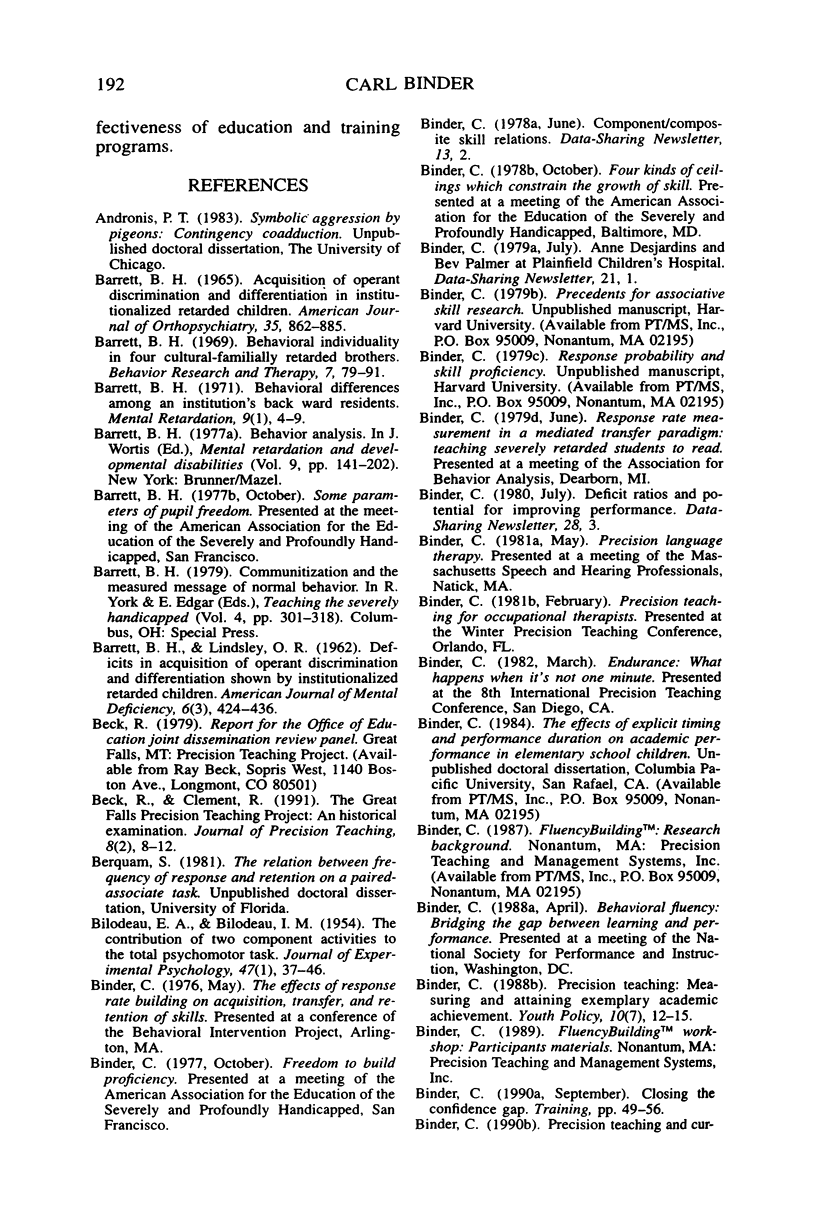
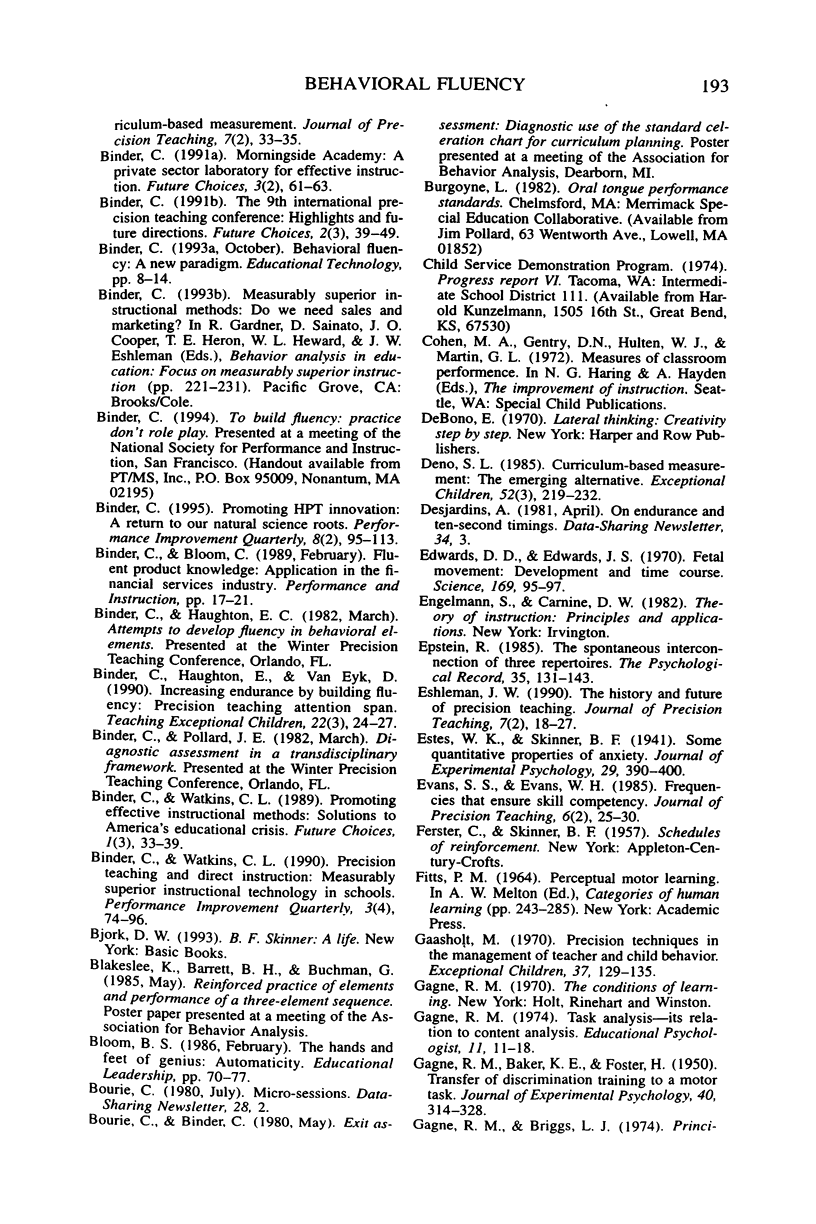

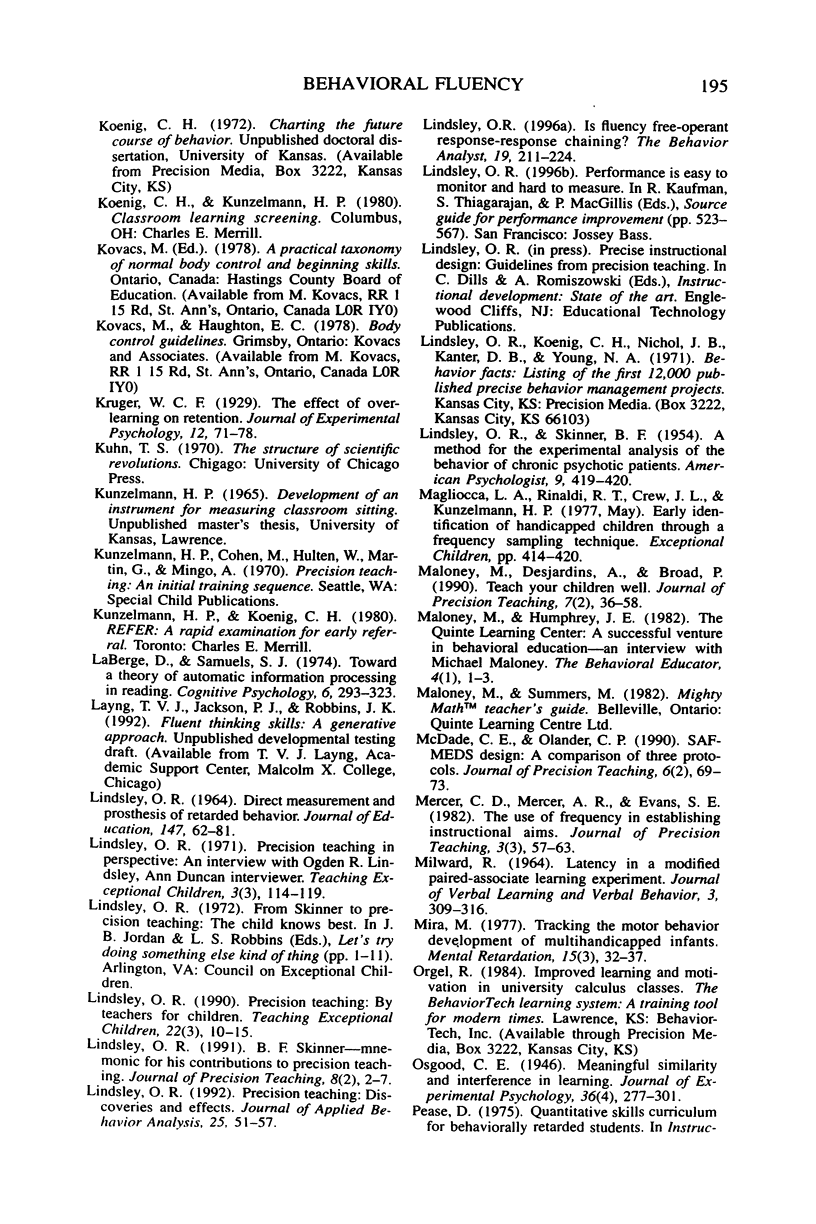
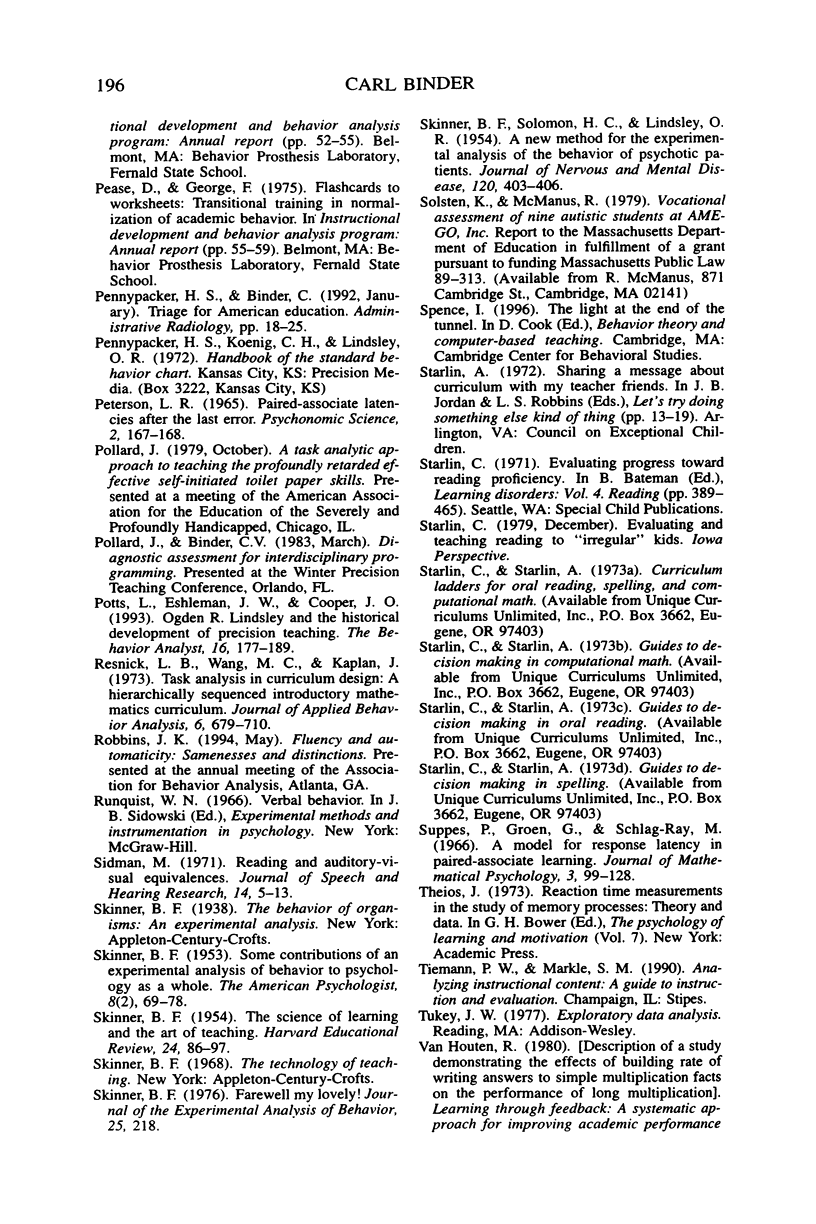
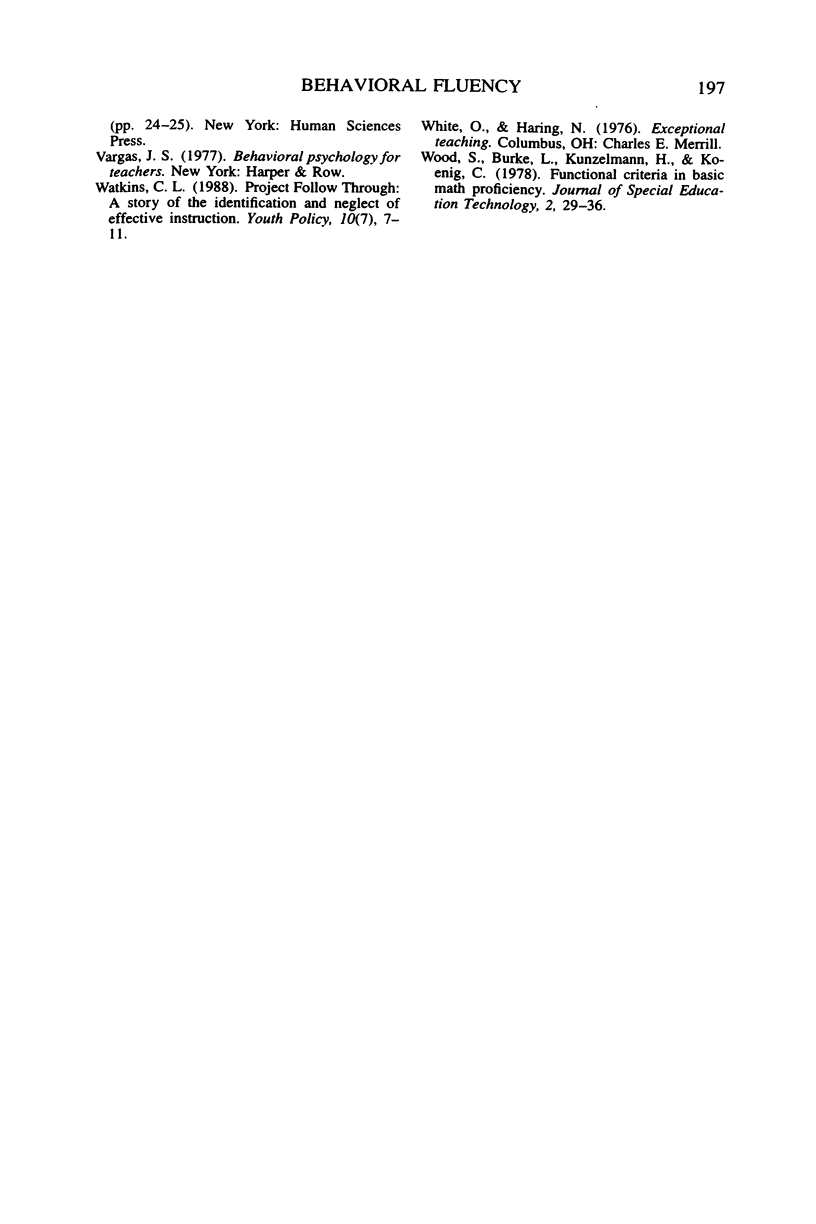
Selected References
These references are in PubMed. This may not be the complete list of references from this article.
- BARRETT B. H., LINDSLEY O. R. Deficits in acquisition of operant discrimination and differentiation shown by institutionalized retarded children. Am J Ment Defic. 1962 Nov;67:424–436. [PubMed] [Google Scholar]
- BILODEAU E. A., BILODEAU I. M. The contribution of component activities to the total psychomotor task. J Exp Psychol. 1954 Jan;47(1):37–46. doi: 10.1037/h0055871. [DOI] [PubMed] [Google Scholar]
- Barrett B. H. Acquisition of operant differentiation and discrimination in institutionalized retarded children. Am J Orthopsychiatry. 1965 Oct;35(5):862–885. doi: 10.1111/j.1939-0025.1965.tb00465.x. [DOI] [PubMed] [Google Scholar]
- Barrett B. H. Behavioral differences among an institution's back ward residents. Ment Retard. 1971 Feb;9(1):4–9. [PubMed] [Google Scholar]
- Barrett B. H. Behavioral individuality in four cultural-familially retarded brothers. Behav Res Ther. 1969 Feb;7(1):79–91. doi: 10.1016/0005-7967(69)90052-7. [DOI] [PubMed] [Google Scholar]
- Deno S. L. Curriculum-based measurement: the emerging alternative. Except Child. 1985 Nov;52(3):219–232. doi: 10.1177/001440298505200303. [DOI] [PubMed] [Google Scholar]
- Edwards D. D., Edwards J. S. Fetal movement: development and time course. Science. 1970 Jul 3;169(3940):95–97. doi: 10.1126/science.169.3940.95. [DOI] [PubMed] [Google Scholar]
- GAGNE R. M., BAKER K. E., FOSTER H. Transfer of discrimination training to a motor task. J Exp Psychol. 1950 Jun;40(3):314–328. doi: 10.1037/h0063166. [DOI] [PubMed] [Google Scholar]
- GAGNE R. M., FOSTER H. Transfer of training from practice on components in a motor skill. J Exp Psychol. 1949 Feb;39(1):47–68. doi: 10.1037/h0063050. [DOI] [PubMed] [Google Scholar]
- Johnson K. R., Layng T. V. Breaking the structuralist barrier. Literacy and numeracy with fluency. Am Psychol. 1992 Nov;47(11):1475–1490. doi: 10.1037//0003-066x.47.11.1475. [DOI] [PubMed] [Google Scholar]
- Judd W. A., Glaser R. Response latency as a function of training method, information level, acquisition, and overlearning. J Educ Psychol. 1969 Aug;60(4):1–30. doi: 10.1037/h0020058. [DOI] [PubMed] [Google Scholar]
- Lindsley O. R. Is fluency free-operant response-response chaining? Behav Anal. 1996 Fall;19(2):211–224. doi: 10.1007/BF03393165. [DOI] [PMC free article] [PubMed] [Google Scholar]
- Lindsley O. R. Precision teaching: Discoveries and effects. J Appl Behav Anal. 1992 Spring;25(1):51–57. doi: 10.1901/jaba.1992.25-51. [DOI] [PMC free article] [PubMed] [Google Scholar]
- Magliocca L. A., Rinaldi R. T., Crew J. L., Kunzelmann H. P. Early identification of handicapped children through a frequency sampling technique. Except Child. 1977 Apr;43(7):414–420. doi: 10.1177/001440297704300702. [DOI] [PubMed] [Google Scholar]
- Mira M. Tracking the motor behavior development of multihandicapped infants. Ment Retard. 1977 Jun;15(3):32–37. [PubMed] [Google Scholar]
- Potts L., Eshleman J. W., Cooper J. O. Ogden R. Lindsley and the historical development of precision teaching. Behav Anal. 1993 Fall;16(2):177–189. doi: 10.1007/BF03392622. [DOI] [PMC free article] [PubMed] [Google Scholar]
- Resnick L. B., Wang M. C., Kaplan J. Task analysis in curriculum design: a hierarchically sequenced introductory mathematics curriculum. J Appl Behav Anal. 1973 Winter;6(4):679–709. doi: 10.1901/jaba.1973.6-679. [DOI] [PMC free article] [PubMed] [Google Scholar]
- Sidman M. Reading and auditory-visual equivalences. J Speech Hear Res. 1971 Mar;14(1):5–13. doi: 10.1044/jshr.1401.05. [DOI] [PubMed] [Google Scholar]
- Urbaniak J. R., Evans J. P., Bright D. S. Microvascular management of ring avulsion injuries. J Hand Surg Am. 1981 Jan;6(1):25–30. doi: 10.1016/s0363-5023(81)80006-8. [DOI] [PubMed] [Google Scholar]


